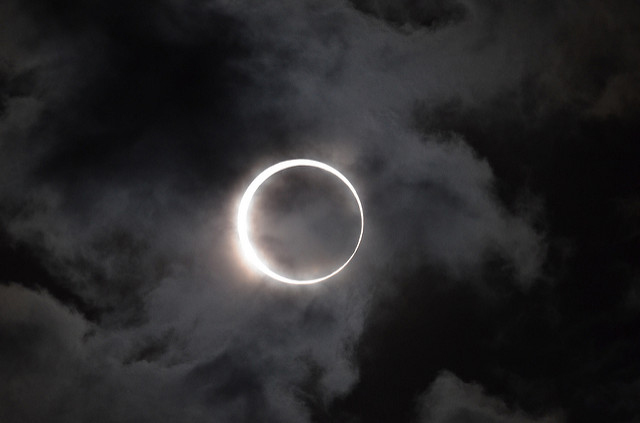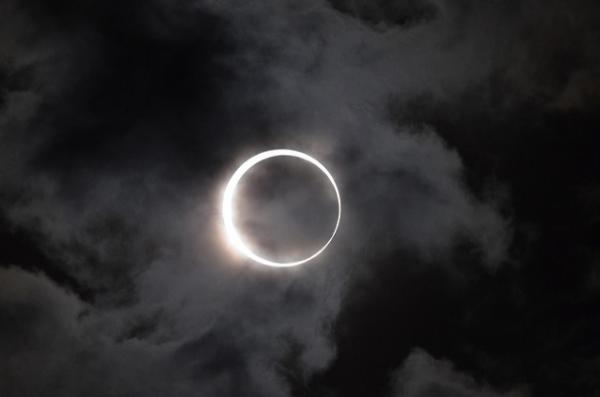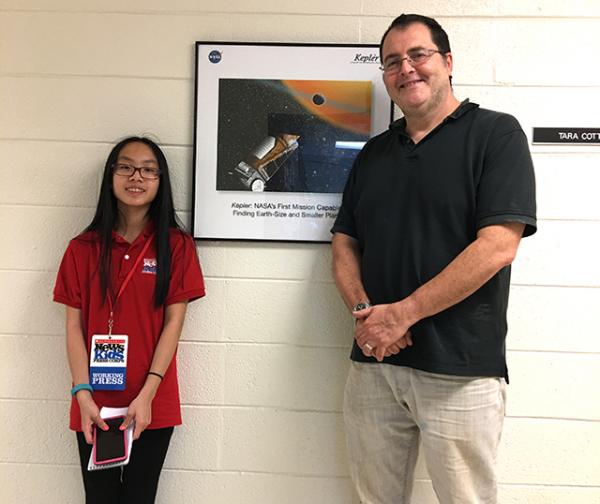KID REPORTERS’ NOTEBOOK
Up in the Sky!


During a solar eclipse, the Moon blocks the sun’s light and casts a shadow on Earth.
People across the country are excited to see the Great American Eclipse. On August 21, a total solar eclipse will cross the United States for the first time since 1918. The eclipse will traverse the U.S. from Oregon to South Carolina.
While many people can watch a partial eclipse, only where the Moon covers the sun’s corona (the glow around its outer edge) fully, will the spectacular view of a solar eclipse be viewable.
Loris Magnini, an astronomy professor at the University of Georgia in Athens, says that “a solar eclipse is only special when it’s in the path of totality [when the Moon completely blocks the sun]. Partial solar eclipses happen two to three times a year. It depends on how much of the Moon covers the sun’s surface.”

Victoria with Loris Magnani, an astronomy professor at the University of Georgia in Athens
SAFETY FIRST
For those people planning to watch the eclipse, special safety glasses are needed to prevent damage to the eyes. Magnani and others warn that some glasses being sold are unsafe and should not be used.
Many people are creating their own projector with a cereal box or just two sheets of paper. Using two pieces of paper, Magnani explained. “you make a hole with a pin in one, which you hold up to the sun. Then by judiciously moving the other piece of the paper, you can create an image of the sun onto the first piece of paper. That you can look at safely.” Of course, that is an indirect way of observing the solar eclipse.
DAY TO NIGHT
The eclipse will begin at 9:05 a.m. (Pacific time) at Lincoln Beach, Oregon. It will move along a path that cuts across 14 states, ending near Charleston, South Carolina, at about 2:48 p.m. (Eastern time).
While only 12 million people live in the direct line of the solar eclipse, many others plan to watch. More than 7 million people have traveled to the U.S. from other countries to watch the eclipse, and big celebrations are planned. An influx of tourists in the areas where the eclipse is fully visible is expected to benefit those economies.
For animals, there will be a brief period of confusion. The sky will darken, and the eclipse will give the appearance of nighttime. But, Magnani added, this will only occur for about 15 minutes. When the eclipse ends, it will be like sunrise.
The previous total solar eclipse in 1918 presented an opportunity to confirm Albert Einstein’s theory of general relativity, which was published in 1915. This year, scientists will have a rare opportunity to study the Earth, sun, and Moon and their interaction.
For many people, it will be the view of a lifetime. The next total solar eclipse will not occur until 2045. To find out what time the eclipse will reach your area and what you can see, check out NASA’s interactive eclipse map.
